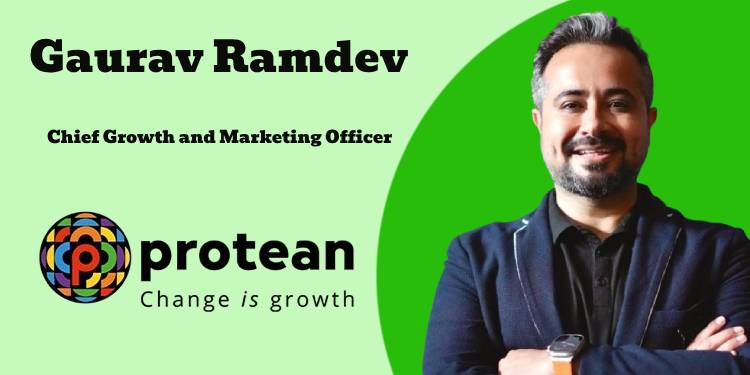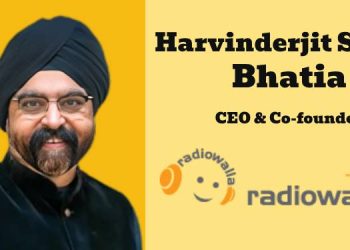Protean eGov Technologies Limited (previously NSDL e-Governance Infrastructure Limited) is a technology company. It underwent a rebranding exercise last year.
The company focusses on developing digital public infrastructure (DPI) and e-governance initiatives for various governmental bodies in India. It works with central and state governments across multiple sectors including Tax Services (PAN, TIN, eTDS), Social Security and Welfare (CRA for NPS & APY),[3] ID and Data Stack, Open Digital Ecosystem, and Cloud. In 2011, the company was appointed as a registrar for the Unique Identification Authority of India (UIDAI) to issue Aadhaar numbers to residents of the country.
Medianews4u.com caught up with Protean eGov Technologies Chief Growth and Marketing Officer Gaurav Ramdev
Q. Protean eGov Technologies rebranded last year. Was the reason to appear younger and more relevant? How has it been received?
Our decision to rebrand ourselves is an integral part of our evolution story. For close to 3 decades now we have been at the forefront of India’s Digital Public Infrastructure journey, spearheading citizen-scale projects, for example the issuance of Permanent Account Number (“PAN”), and the development and management of the Tax Information Network (“TIN”), to name a few.
The digital landscape in India is growing at a phenomenal pace! Capitalising on this momentum, we have evolved from primarily focusing on legacy projects to creating comprehensive technological offerings that span across Open Digital Ecosystems, Social Security & Welfare, Information Security Consulting, Cloud Services and Data Stack. As a result, we have undergone significant growth and diversification over the years.
While we are proud of our heritage, we needed an identity that would fully represent the breadth of our offerings, our legacy values and our vision for the future – bringing us to the discovery of “Protean” – meaning versatile, a name that better conveys our core values, unique strengths, and aspirations for growth.

Q. How did the company tackle the challenge of re-establishing recall and trust in the new brand identity of Protean?
When we embarked on our rebranding journey, we knew there was no turning back. We were bidding farewell to a name that had been synonymous with our company for nearly three decades. We faced challenges, of course. Re-establishing trust, regaining recall – it was a Herculean task. But we drew strength from our history, our track record, and the unwavering passion of our team.
Our simple focus was to share our story, articulate our vision, and demonstrate the value we bring to our customers – and do this in a creative way.
So, we unveiled our first ever 360° brand campaign titled ‘Change is Growth’. Through this campaign, we delivered mass awareness for the new brand and reaffirmed our commitment of driving transformative change for a billion people.

Q. How does the company’s brand-culture of ‘always creative’, ‘always growth-oriented’ and ‘marketing discipline’ help it deliver quality work?
You need to look at each of these aspects individually. To be an ‘always creative’ brand is all about having vision. It’s a brand that dares to dream, to innovate, to challenge the status quo. It’s a brand that understands the power of imagination, the magic of storytelling, and the importance of connecting with people on an emotional level.
A ‘growth-oriented brand’ is a resilient brand. It’s a brand that embraces change, that learns from its mistakes, and that never stops striving for improvement. It’s a brand that sees opportunities where others see obstacles, and that has the courage to take risks.
And finally, a ‘disciplined brand’ is a focussed brand. It’s a brand that knows the importance of planning, of strategy, and of execution. It’s a brand that measures its success, that learns from its failures, and that always strives for excellence.
When you combine creativity, growth, and discipline – you unleash the potential to change the world. That’s the triad we are working with.
Q. Since the penetration of financial literacy in the country is still very limited, are explainer videos an important part of marketing activities? How does Protean tailor its marketing efforts to effectively communicate its value proposition to a diverse audience?
For a country with a diverse population of over 1.4 billion, a concerning majority lack the basic knowledge and skills to make informed financial decisions. Add to this predicament, shorter customer attention spans – a very real challenge faced by marketers globally.
Against this backdrop, explainer videos, offer a concise, visually appealing solution to transform complex concepts into easily digestible, engaging content.
Protean has been using explainer videos in our marketing mix very efficiently. We have our own YouTube Channel- ‘Protean – NPS ki Pathshala’, that was created with the aim to provide clarity and address queries related to NPS in an audio-visual manner. The videos on our channel have been conceptualized based on queries and feedback received from our stakeholders. As proof of the efficiency of such explainer videos, our channel has received the Youtube Silver Play Button for reaching 1,00,000 subscribers.
Q. What are the most significant trends or challenges facing the digital marketing industry today?
‘All things content’ will be the trendsetter in digital marketing – the type of content created, the way it is produced, and the manner in which it is consumed are all evolving rapidly.
Today’s consumers crave immersive experiences. From virtual product tours to interactive storytelling, immersive content will redefine the boundaries of traditional marketing. That’s why technologies like augmented reality (AR) and virtual reality (VR) will play a significant role in creating interactive content that engages audiences on a deeper level.
User-generated content (UGC) has emerged as a powerful digital marketing tool. UGC can be leveraged strategically across social media posts, reviews and vlogs to foster a sense of community and authenticity.
The way we consume content is also changing. Voice search is becoming increasingly popular, highlighting a need for brands to optimize content for voice-based queries. Additionally, the rise of short-form video content has transformed the way we consume information.
In this very new environment some challenges persist – Ad fatigue, a consequence of oversaturation, makes it increasingly difficult to capture consumer attention; measuring the return on investment (ROI) of digital marketing campaigns, especially across multiple channels, remains a complex task; and the rapid pace of technological advancements makes staying ahead of the curve a demanding ask.

Q. How does approach to marketing differ for B2B and B2C companies? What are the key considerations and challenges specific to each type of customer?
The divergence between B2B and B2C marketing is a fascinating study in the art of persuasion. In the realm of B2B, the focus is on rational appeal. It’s about demonstrating value, highlighting efficiency, and emphasizing the tangible benefits. The emphasis is on building trust, fostering relationships, and providing solutions to complex business problems.
In stark contrast, B2C marketing is often an emotional affair. It taps into desires, aspirations, and fears. The emphasis is on creating a brand story, evoking emotions, and ultimately, driving impulse purchases.
While B2B marketing is a long-term game, often involving multiple stakeholders and complex decision-making processes, B2C marketing thrives on spontaneity and instant gratification. The former is about building a solid foundation, the latter about capturing lightning in a bottle.
Yet, as the digital age blurs the lines between these two worlds, wesee a convergence of strategies. B2B companies are increasingly adopting consumer-centric approaches, while B2C brands are leveraging data and analytics to personalise their offerings.
In the end, the most effective marketing, be it B2B or B2C, is one that understands its audience, speaks their language, and delivers on its promises.


















